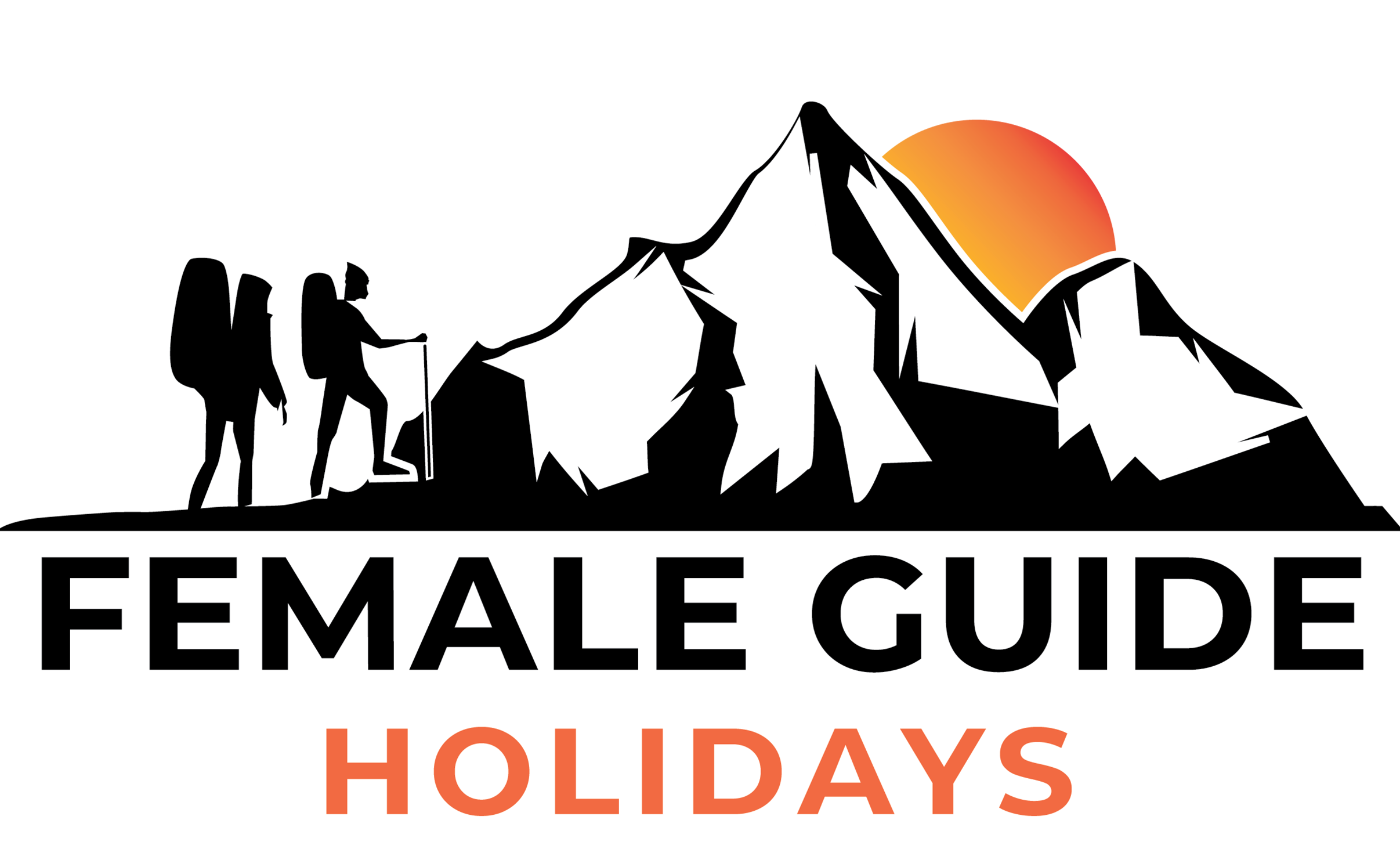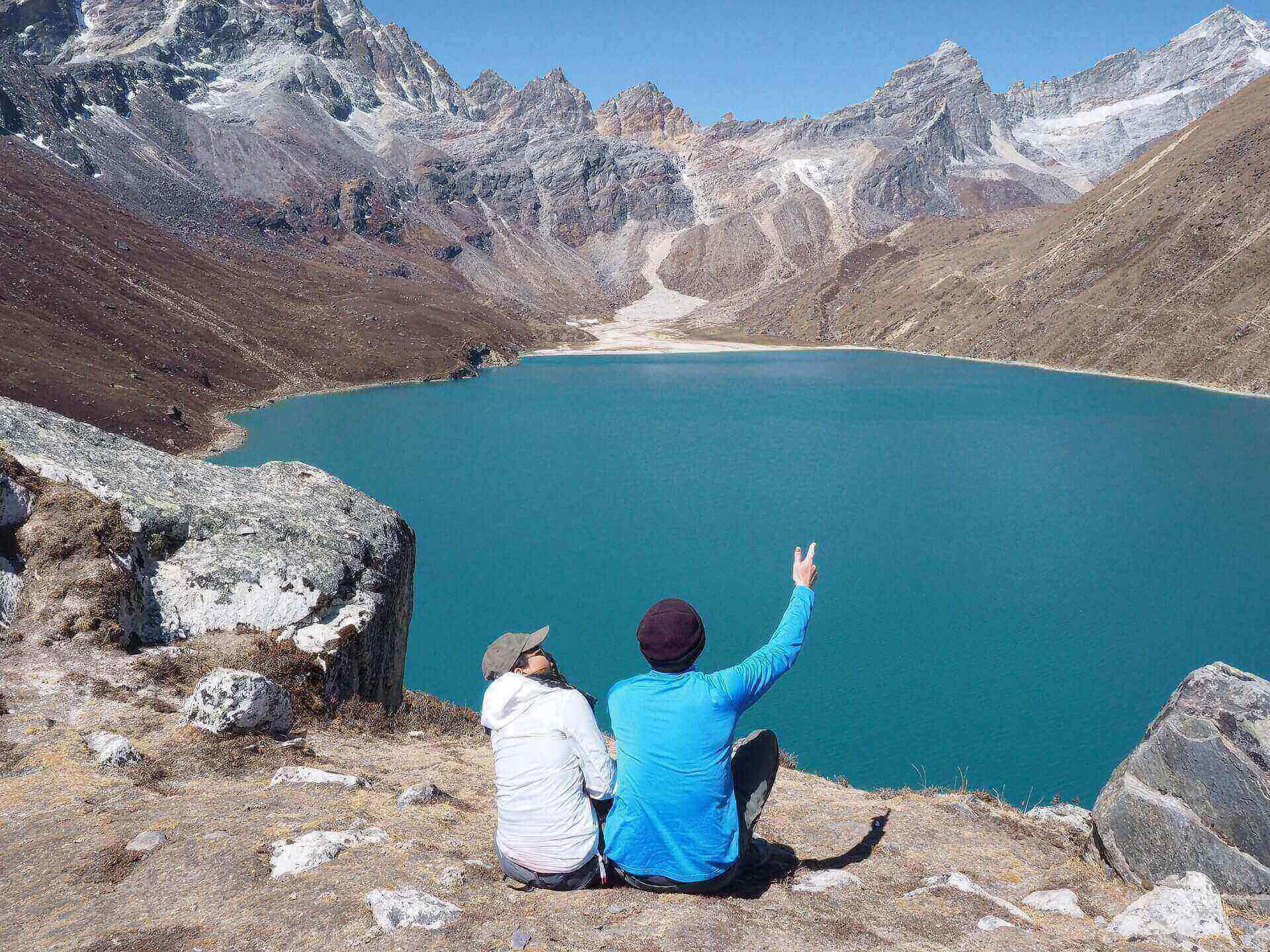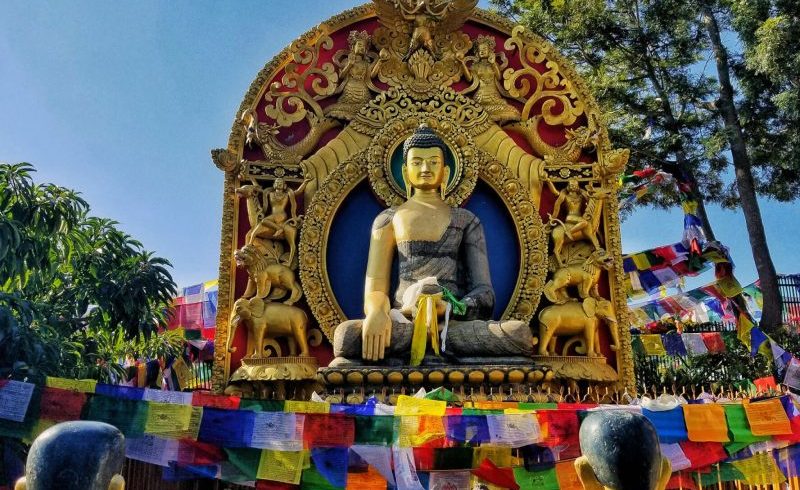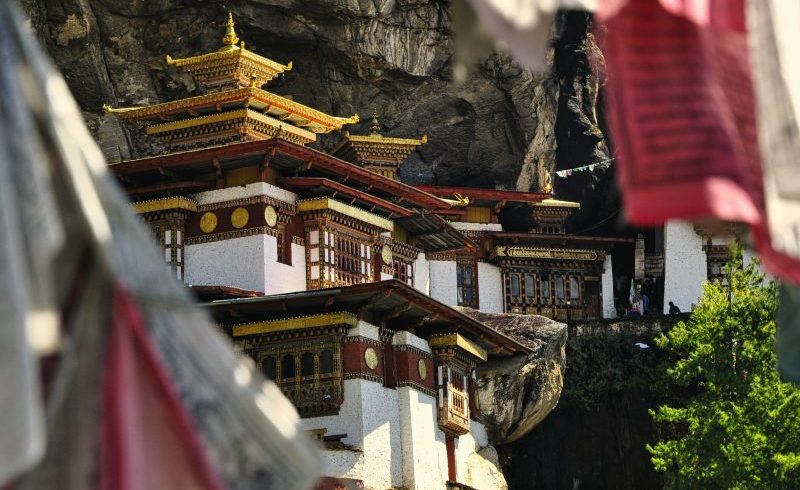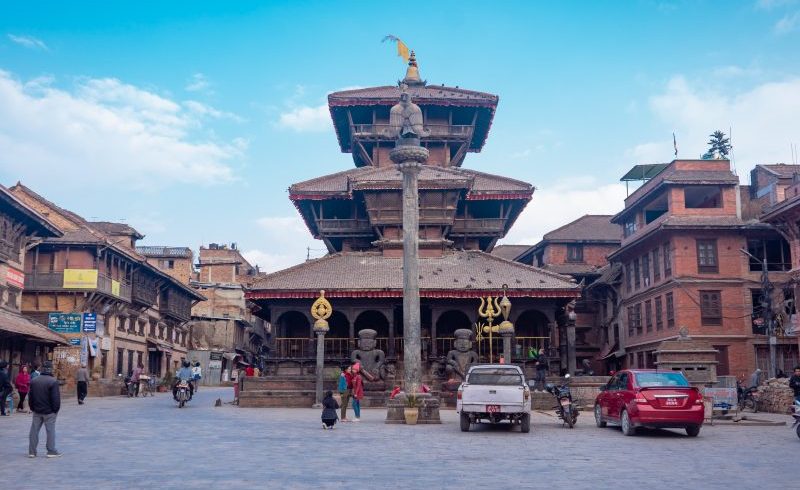Everest Base Camp and Gokyo Lake Trek: The Everest Base Camp and Gokyo Lake trek is one of the most popular and scenic trekking routes in the Himalayas, combining stunning views of Mount Everest and the surrounding peaks with the serene beauty of Gokyo Lakes. This challenging trek takes you through the heart of the Khumbu region, passing traditional Sherpa villages, ancient monasteries, and lush forests before reaching the high-altitude landscapes.
On the Everest Base Camp section, trekkers will experience unparalleled views of Everest, Lhotse, and other majestic mountains, while the Gokyo Lake trek offers a quieter, equally mesmerizing experience with turquoise glacial lakes and panoramic mountain vistas from the Gokyo Ri summit.
Ideal for seasoned trekkers, this trek provides an opportunity to explore the beauty and culture of Nepal’s Everest region while reaching two of its most iconic landmarks. The Everest Base Camp and Gokyo Lake trek offers a once-in-a-lifetime adventure, perfect for those looking to challenge themselves and experience Nepal’s natural wonders at their finest.
Lukla
Lukla is a small town located in the Khumbu region of Nepal, serving as the gateway to the Everest region. Known for its iconic Tenzing-Hillary Airport, Lukla is where most trekkers begin their journey to Everest Base Camp and other nearby destinations like Gokyo Lake. The airport is famous for its short, steep runway and is considered one of the most challenging airports in the world for pilots.
Lukla itself is a bustling village with a mix of local Sherpa culture and services catering to trekkers, including lodges, shops, and trekking gear rentals. It is situated at an altitude of around 2,860 meters (9,383 feet) and provides a perfect starting point for acclimatization before heading into higher altitudes. The village is surrounded by beautiful mountainous landscapes, lush forests, and offers stunning views of peaks like Kusum Kanguru and Numbur Himal.
Despite its small size, Lukla plays a vital role in connecting the Everest region to the rest of Nepal, with daily flights operating from Kathmandu.
Gokyo
Gokyo Lake is a stunning glacial lake located in the Everest region of Nepal, offering trekkers a serene and picturesque alternative to the busy Everest Base Camp trail. Situated at an altitude of 4,700 meters (15,400 feet), Gokyo Lake is part of the Gokyo Valley, which is renowned for its breathtaking beauty, turquoise-colored lakes, and panoramic views of the Himalayas. The trek to Gokyo Lake takes you through traditional Sherpa villages, dense forests, and high-altitude meadows, making it a peaceful yet rewarding journey. One of the main highlights is the view from Gokyo Ri, a nearby summit that offers one of the best panoramic vistas in the Everest region, including views of Mount Everest, Lhotse, Makalu, and Cho Oyu. Gokyo Lake is not just a natural wonder but also a spiritual site for the local Sherpa community. Ideal for trekkers looking for a quieter route away from the crowds of Everest Base Camp, Gokyo Lake offers an unforgettable experience in the heart of the Himalayas.
Explore Sagarmatha National Park
Sagarmatha National Park, located in the Khumbu region of Nepal, is a UNESCO World Heritage Site renowned for its dramatic landscapes and rich biodiversity. The park covers an area of 1,148 square kilometers and is home to some of the highest peaks in the world, including Mount Everest, Lhotse, and Makalu.
Here are key highlights of exploring Sagarmatha National Park:
- Mount Everest: The park is famous for being the home of the world’s highest mountain, Mount Everest (8,848m). Trekkers and mountaineers from around the globe come to Sagarmatha National Park to experience Everest Base Camp and witness stunning views of the surrounding peaks.
- Breathtaking Views: Apart from Everest, visitors can enjoy panoramic views of numerous other towering peaks such as Lhotse, Cho Oyu, and Nuptse, as well as glaciers and deep valleys. The vistas from spots like Kala Patthar and Gokyo Ri are unforgettable.
- Rich Biodiversity: The park is home to diverse wildlife adapted to the harsh Himalayan environment. Visitors may spot animals such as the Himalayan tahr, musk deer, snow leopard, and red panda. The park is also a haven for birdwatchers, with species like the Himalayan griffon vulture, pheasants, and Danphe (Himalayan Monal).
- Sherpa Culture: Sagarmatha National Park also preserves the unique culture of the Sherpa people. The trek through the park passes traditional Sherpa villages like Namche Bazaar, Dingboche, and Tengboche, where trekkers can visit Buddhist monasteries and experience the rich heritage of the local community.
- Trekking Trails: Several trekking routes pass through the park, including the Everest Base Camp trek and the Gokyo Lakes trek. The park’s well-maintained trails offer trekkers an opportunity to explore rugged terrain, dense forests, and alpine meadows, with various levels of difficulty.
- Sacred Monasteries: The park is home to significant Buddhist monasteries like the Tengboche Monastery, which offers spiritual tranquility and stunning views of the surrounding mountains. The ancient monasteries provide insight into the Sherpa culture and the importance of Buddhism in this region.
- Unique Flora: Sagarmatha National Park boasts a variety of plant species, from temperate forests in the lower altitudes to alpine meadows and barren landscapes at higher elevations. Rhododendrons, junipers, and birches are common in the lower areas, while high-altitude plants like mosses and lichens dominate the higher regions.
Exploring Sagarmatha National Park offers an immersive experience in nature, culture, and adventure, making it a must-visit destination for trekkers and nature lovers.
Everest Base Camp Trek: A Journey to the Foot of the World’s Highest Peak
As you continue along the main route, excitement builds as you approach Everest Base Camp (EBC). Walking beneath the towering presence of Mount Everest is a humbling and awe-inspiring experience. At EBC, the atmosphere is electric with mountaineers preparing for their expeditions, adding to the sense of adventure. Here, you can take in the stunning views of the surrounding peaks and fully appreciate the grandeur of the world’s tallest mountain.
For those seeking an even more breathtaking adventure, a hike up to Kala Patthar is the next step. This iconic viewpoint, which means “black rock” in Nepali, provides an unrivaled panoramic view of the Khumbu Valley. Standing at Kala Patthar, you’ll be treated to a close-up view of Everest, Lhotse, Nuptse, and a chain of other towering Himalayan peaks—creating a truly unforgettable experience.
Ancient Buddhist Monasteries along the Trek
As you make your way through the Everest Base Camp trek, you’ll encounter several ancient Buddhist monasteries, which are integral to the local Sherpa culture. These sacred sites, often perched on the mountainside, offer a peaceful escape and a glimpse into the spiritual life of the Sherpa people. A highlight is Tengboche Monastery, known for its impressive three-story structure and colorful prayer flags fluttering in the wind. These monasteries are not just places of worship; they provide a unique opportunity to learn about Sherpa Buddhism, witness traditional prayer ceremonies, and experience the tranquility of the Himalayas.
The Journey Beyond the Destination
The Everest Base Camp and Gokyo Lake trek is more than just reaching a destination—it’s about the journey itself. The trek offers a chance to push your physical and mental limits, disconnect from everyday life, and immerse yourself in the breathtaking natural beauty of the Himalayas. The experience will leave you with memories to cherish forever, making it a life-changing adventure that stays with you long after you’ve returned home.
Difficulty Level
The Everest Base Camp and Gokyo Lake trek is a challenging adventure that requires a good level of physical fitness and mental stamina. The trek involves long days of walking at high altitudes, with steep ascents and descents. The path can be rugged and uneven, especially in remote areas. The altitude can be tough for some trekkers, with the risk of altitude sickness above 3,000 meters. It’s essential to acclimatize properly by taking rest days and following a slow, steady pace. While this trek is not technically difficult, it is physically demanding and best suited for experienced trekkers or those with a good fitness level. Female Guide Holiday can provide expert guidance and support throughout the trek, ensuring that you are well-prepared for this challenging journey.
Physical Fitness and Requirements
The Everest Base Camp and Gokyo Lake trek is a physically demanding adventure that requires good fitness and stamina. Although it doesn’t involve technical climbing, the challenge comes from high-altitude terrain, long days of hiking, and steep ascents and descents. Endurance is crucial, as the trek typically involves 5 to 8 hours of walking each day on uneven and rocky paths. Strength and conditioning are also important, especially for tackling the steep uphill and downhill sections; exercises like squats, lunges, and push-ups will help prepare your body. Acclimatization to high altitudes above 5,000 meters is essential to avoid altitude sickness, so it’s vital to take rest days and ascend gradually. Flexibility and balance are necessary to navigate the rugged terrain, and practices like stretching, yoga, and balance training can help prevent injuries. Mental preparation is equally important, as the trek can be challenging both physically and mentally. Maintaining a positive mindset and using techniques like meditation and visualization will help you stay focused and resilient throughout the journey.
Training Tips
To prepare for the Everest Base Camp and Gokyo Lake trek, it’s recommended to start your training at least 2-3 months before the trek. Gradually increase the intensity of your workouts, including long walks or hikes with a backpack to simulate the conditions of the trek. Incorporate high-altitude hiking or hiking in mountainous areas if possible. Additionally, try to practice walking with a loaded backpack to prepare for the weight you’ll carry during the trek.
By building your fitness through consistent training and preparing both physically and mentally, you’ll be ready for the challenges of the Everest Base Camp and Gokyo Lake trek, ensuring a more enjoyable and successful adventure. Female Guide Holiday can also provide expert advice and support throughout the journey, ensuring you are properly prepared for the trek ahead.
Environment
The Everest Base Camp and Gokyo Lake trek takes you through some of the most stunning landscapes in the world, from lush forests and Sherpa villages to high-altitude glaciers and barren alpine meadows. The trek passes through Sagarmatha National Park, a UNESCO World Heritage Site, which is home to diverse flora and fauna. The environment is raw and rugged, with towering peaks like Mount Everest, Lhotse, and Makalu dominating the skyline. Along the route, you’ll walk through dense forests of rhododendron, juniper, and pine, and pass pristine glacial lakes in the Gokyo region. The trek offers trekkers a chance to experience the beauty and serenity of the Himalayas, along with the unique culture of the Sherpa people.
Climate and Weather
The climate on the Everest Base Camp and Gokyo Lake trek varies with altitude and season. In lower altitudes, such as Namche Bazaar and Lukla, the weather can be mild and temperate, with daytime temperatures ranging from 10°C to 15°C during trekking season. As you ascend, temperatures drop significantly, especially at higher altitudes. At Everest Base Camp and Gokyo Lake, nighttime temperatures can plunge well below freezing, even in the trekking seasons of spring and autumn. The best times to trek are pre-monsoon (March to May) and post-monsoon (September to November), as these months offer stable weather conditions with clear skies. During the winter months (December to February), the region experiences freezing temperatures, and some routes may be blocked by snow, making it a less ideal time for trekking.
Meals
On the Everest Base Camp and Gokyo Lake trek, meals are typically served at teahouses along the route, where trekkers can enjoy traditional Nepali dishes like dal bhat (lentil soup with rice), momo (dumplings), and various noodle soups. In higher altitudes, the menu may include more Western options like pancakes, pasta, and sandwiches, but local meals are often recommended for better acclimatization. The food is generally simple but nutritious, providing the energy needed for the trek. The teahouses also serve tea, coffee, and snacks like biscuits and chocolate. Female Guide Holiday ensures that you are well taken care of by recommending safe and hygienic places to eat, making sure you are nourished and energized for each day’s trek.
Drinking Water
Safe drinking water is crucial during the Everest Base Camp and Gokyo Lake trek. The teahouses along the route offer bottled water for purchase, but it can be expensive and contribute to plastic waste. A more sustainable and cost-effective option is to carry a reusable water bottle and purify water from natural sources along the way using water purification tablets or filters. Many trekkers also use boiling water provided by teahouses to refill their bottles. It’s important to stay hydrated throughout the trek, as dehydration can increase the risk of altitude sickness. Female Guide Holiday can provide advice on safe water practices and help you find the best options for staying hydrated during your trek.
Accommodation
Accommodation on the Everest Base Camp trek with Gokyo Lake is typically provided in cozy tea houses or guesthouses, offering trekkers a comfortable and authentic experience in the heart of the Himalayas. These lodges are simple yet welcoming, with basic amenities like shared bathrooms, heating systems (usually in common areas), and hot water for showers (though often at an additional cost). Rooms are generally twin-sharing, with bedding provided, but it’s a good idea to bring your own sleeping bag for extra warmth, especially during colder months. While the accommodations may be basic, the warmth of the Sherpa hospitality and the stunning mountain views make up for any lack of luxury. In higher-altitude areas, like Gokyo and Everest Base Camp, the facilities can be more rustic, but they remain sufficient for trekkers. Meals are typically served in the guesthouses, with options ranging from traditional Nepali dishes to Western food, providing a refueling stop after a day of trekking.
Travel Insurance
Travel insurance is highly recommended for anyone undertaking the Everest Base Camp and Gokyo Lake trek. A comprehensive policy should cover trekking at high altitudes, medical emergencies, emergency evacuation, trip cancellations, and lost luggage. Due to the remote nature of the trek, medical facilities are limited, and evacuation from higher altitudes can be expensive. Having travel insurance ensures that you are covered in case of unforeseen events or emergencies. Female Guide Holiday can guide you on selecting appropriate travel insurance that provides full coverage for trekking in the Himalayas, ensuring peace of mind throughout your adventure.
Passport and Visa
To trek in Nepal, you will need a valid passport with at least six months of validity remaining from your date of entry. A tourist visa for Nepal can be obtained upon arrival at Tribhuvan International Airport in Kathmandu or in advance from a Nepalese consulate. The visa is usually valid for 15, 30, or 90 days, depending on your travel needs. You will also need a TIMS (Trekkers’ Information Management System) card and a Sagarmatha National Park entry permit, both of which are required for trekking in the Everest region. These can be obtained in Kathmandu or at the park entry points. Female Guide Holiday can assist with the necessary permits and visa information, ensuring that all paperwork is in order before your trek.
Lukla Flight and Weather
Flights to Lukla, the gateway to the Everest region, depart from Kathmandu’s Tribhuvan International Airport. The flight is a thrilling experience, as it takes you over the breathtaking landscapes of Nepal’s rugged mountains before landing at the Tenzing-Hillary Airport in Lukla, known for its short and steep runway. Weather plays a critical role in flight operations to Lukla, as flights are highly dependent on clear weather conditions. Poor visibility, strong winds, or snowstorms can often lead to delays or cancellations, especially during the monsoon (June to September) and winter (December to February) months when weather conditions are more unpredictable. The best time for flying to Lukla is during the pre-monsoon (March to May) and post-monsoon (September to November) seasons, when the weather is generally clearer and flights are more likely to operate on schedule. However, passengers should always be prepared for potential delays due to weather conditions in this mountainous region.
Alternative Ways to Reach Lukla When Weather Disrupts Flights
When bad weather affects flights to Lukla from Kathmandu, there are several alternative ways to reach Lukla to continue your Everest region trek:
- Drive to Ramechhap and Fly to Lukla: One of the most common alternatives is to drive to Ramechhap, which is about a 4-5 hour journey from Kathmandu. From Ramechhap, you can take a flight to Lukla, which is only a 10-minute flight. This option can often avoid weather delays in Kathmandu, as Ramechhap’s weather conditions may be more favorable for flying to Lukla.
- Helicopter to Lukla: If weather conditions permit, a helicopter can be chartered to take you directly to Lukla. This is a more expensive option but can be a faster and more reliable way to reach Lukla in case of flight cancellations due to bad weather. Helicopter flights can sometimes operate when regular flights are grounded, though availability and cost may vary.
- Drive to Phaplu: Another alternative is to drive from Kathmandu to Phaplu, a town located about 8-9 hours away by road. From Phaplu, you can catch a short flight to Lukla, which is much less likely to be affected by weather issues compared to flights from Kathmandu. This option takes longer but can be a practical solution during bad weather conditions.
- Drive to Jiri and Trek to Lukla: If you have extra time, you can take a longer journey by road to Jiri, which is about 8-10 hours from Kathmandu. From Jiri, you’ll trek to Lukla, which can take an additional 3-4 days depending on your pace. This option is not only a way to bypass flight disruptions but also offers a chance to experience the traditional trekking route to Everest Base Camp, passing through picturesque villages and beautiful landscapes.
Each of these options offers a viable alternative to reach Lukla during bad weather, and the best choice depends on your time, budget, and flexibility.
Packing List
For the Everest Base Camp trek, packing the right gear is crucial for your comfort and safety. Below is a comprehensive packing list that covers all the essentials you’ll need for the trek, from clothing to accessories and trekking equipment.
- 2-3 moisture-wicking thermal shirts (long-sleeve for colder months)
- 2-3 pairs of moisture-wicking thermal pants
- 1-2 pairs of trekking socks (warm and breathable)
- Fleece jacket or sweater (for warmth)
- Insulated vest or jacket for extra warmth in the evenings
- Waterproof, windproof jacket (preferably Gore-Tex or similar) to protect against wind and rain
- Waterproof trekking pants (especially useful during rainy season)
- Down jacket (essential for cold evenings at higher altitudes)
- 1-2 pairs of lightweight trekking pants (convertible ones are a good choice)
- Trekking Boots (waterproof, comfortable, and broken in)
- Camp shoes (lightweight, such as flip-flops or lightweight sneakers for around the lodge)
- Gaiters (for snow and wet conditions, optional)
- Warm wool or fleece hat
- Sun hat or cap (for sun protection)
- Balaclava or neck gaiter (for extra warmth and protection from wind)
- Lightweight gloves for trekking
- Warm insulated gloves for evenings and higher altitudes
- 1-2 pairs of thermal base layer tops and bottoms (for evenings and colder days)
- Daypack (20-30L) for carrying water, snacks, camera, and personal items while trekking
- Duffel bag (to store all your gear; it will be carried by the porter)
- Rain cover for your backpack
- 4-season sleeping bag (with a comfort rating of -10°C or 14°F)
- Lightweight adjustable trekking poles (with rubber tips for rocky terrain)
- 2-3 liters of water capacity (1L water bottles, or a hydration system like Camelbak)
- Water purification tablets or Steripen (optional)
- A reliable headlamp (with extra batteries)
- UV-protection sunglasses with good coverage for high altitudes
- High SPF sunscreen (30+)
- Lip balm with SPF
- Sunhat or cap
- Toothbrush and toothpaste
- Wet wipes and hand sanitizer
- Personal hygiene products (feminine hygiene, etc.)
- Small towel
- Biodegradable soap (for eco-friendly cleaning)
- Basic first aid kit with bandages, painkillers, antiseptic cream, blister plasters, and any personal medications
- Altitude sickness medication (consult your doctor)
- Anti-diarrhea medication
- Camera (smartphone or DSLR)
- Extra batteries and memory cards
- Waterproof phone case or dry bags (for electronic devices)
- Passport (with a valid Nepalese visa)
- National Park Entry Permit and TIMS Card (provided by your trek operator)
- Travel insurance details (with emergency evacuation coverage)
- Energy bars, trail mix, chocolate, or other high-energy snacks for the trek
- Cash (NPR) for purchasing drinks, snacks, or tipping along the way
- Credit/debit card for purchases in larger towns like Namche Bazaar
- Power bank for charging devices on the go (note that charging can be available at tea houses for an extra charge)
- Plastic bags for packing out trash and keeping your gear organized
- Travel pillow for added comfort during the trek or while traveling
- Extra trekking boots liners for better comfort and reducing blisters
- Notebook and pen to journal your experiences along the way
- Binoculars for wildlife and scenic views
Notes:
- Gear Rentals: Some trekking gear (e.g., sleeping bags, down jackets) can be rented in Kathmandu or Lukla if needed.
- Weather: Weather conditions can change rapidly in the Himalayas. Be prepared for cold, wind, rain, and sunshine all in one day, especially as you ascend.
- Weight Limit: Porters typically carry up to 15-20kg per person, so pack efficiently.
By ensuring you have all of these essentials, you’ll be well-prepared for your Everest Base Camp trek, keeping comfortable and safe throughout the journey.
Cancelation Policy
- 45 to 60 days before departure: 35% of the total tour cost
- 30 to 44 days before departure: 50% of the total tour cost
- 15 to 29 days before departure: 70% of the total tour cost
- 7 to 14 days before departure: 85% of the total tour cost
- Less than 7 days before departure: 100% of the total tour cost
- If you cancel between 60 and 90 days before departure, contact us directly for cancellation terms.
Please note that if you cancel between 60 and 90 days before departure, the cancellation policy provided does not specify charges for this time frame. We recommend contacting us directly to discuss your situation if you need to cancel within this period.
Force Majeure
In the event of a Force Majeure during the trek, such as natural disasters, extreme weather conditions, political unrest, or unforeseen circumstances beyond our control, the trek may be delayed, modified, or canceled for safety reasons. While we will make every effort to provide alternative arrangements or reschedule the trip, we are not liable for any additional costs incurred due to such events. Trekkers will be notified promptly, and refunds or compensation will be considered on a case-by-case basis, keeping in mind the situation’s impact on the trek. Safety and well-being are our top priorities during any Force Majeure event.
Trek Highlights:
- Stunning views of Mount Everest, Lhotse, Makalu, and other Himalayan peaks.
- Visit to Everest Base Camp and the famous Khumbu Glacier.
- Scenic Gokyo Lakes, with their vibrant turquoise waters.
- Breathtaking panoramic views from Gokyo Ri (5,357m).
- Explore traditional Sherpa villages, including Namche Bazaar and Dingboche.
- Experience the unique Sherpa culture and visit ancient monasteries.
- Cross the high-altitude Cho La Pass (5,420m) for a thrilling adventure.
- Discover the beauty of Sagarmatha National Park, a UNESCO World Heritage Site.
- Opportunity to spot rare wildlife such as the Himalayan Tahr, snow leopards, and various bird species.
